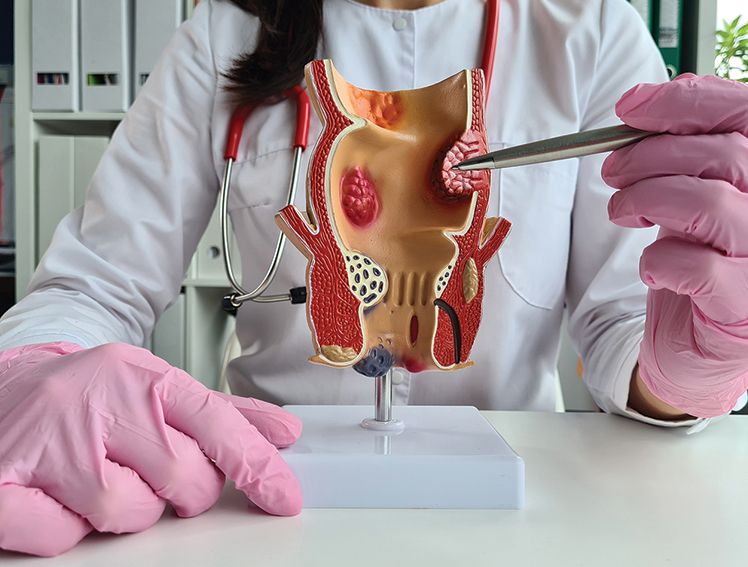
Role of Laparoscopic Surgery in Treating Hernias
Have you ever wondered why some people recover from hernia surgery so quickly while others take longer? The secret often lies in the type of surgery they undergo. Hernias can be a source of significant discomfort and, if left untreated, can lead to serious complications. However, modern surgical techniques have made treatment more effective and less daunting. Let's explore how laparoscopic surgery is changing the game for both doctors and patients, offering a quicker, less painful path to recovery.
What are Hernias?
A hernia occurs when an organ or tissue protrudes through a weak spot in the surrounding muscle or connective tissue. The most common types include:
- Inguinal Hernia: Occurs in the groin area.
- Femoral Hernia: It also appears in the groin but is less common.
- Umbilical Hernia: Found around the belly button.
- Hiatal Hernia: Part of the stomach pushes up into the chest cavity.
- Incisional Hernia: Develops at the site of a previous surgical incision.
Common Causes and Risk Factors of Hernia
Several factors can contribute to the development of hernias, including:
- Genetic Predisposition: A family history of hernias.
- Physical Strain: Heavy lifting, persistent coughing, or intense physical activity.
- Obesity: Excess weight puts additional pressure on abdominal walls.
- Age: Muscles weaken with age, increasing hernia risk.
- Previous Surgery: Surgical scars can create weak spots.
Symptoms and Complications of Untreated Hernias
Hernias can occur with various symptoms such as:
- Visible Bulge: A noticeable bulge in the affected area, especially when standing or straining.
- Pain or Discomfort: Pain that intensifies with physical activity.
- Digestive Issues: For hiatal hernias, symptoms can include acid reflux and difficulty swallowing.
Untreated hernias can lead to serious complications like obstruction or strangulation of the protruding organ, which requires immediate medical intervention.
Open Hernia Repair vs. Laparoscopic Surgery
What is Open Hernia Surgery?
Open hernia repair involves a large incision near the hernia site to push the protruding tissue back into place and strengthen the weakened area with stitches or mesh. This traditional method has been effective but comes with a longer recovery period and more postoperative pain.
Introduction to Laparoscopic Hernia Repair
Laparoscopic hernia surgery, on the other hand, uses several small incisions through which a laparoscope (a thin tube with a camera) and surgical instruments are inserted. The surgeon can view the hernia on a monitor and repair it with precision.
Key Differences Between Open and Laparoscopic Techniques
The primary differences between open and laparoscopic hernia surgery include:
- Incision Size: Open surgery requires a larger incision, whereas laparoscopic surgery involves smaller incisions.
- Recovery Time: Patients undergoing laparoscopic surgery typically experience faster recovery.
- Postoperative Pain: Laparoscopic surgery generally results in less postoperative pain.
Risk of Infection: Smaller incisions in laparoscopic surgery reduces the risk of infection.
Advantages of Laparoscopic Hernia Surgery for Patients
- Minimally Invasive Approach: Laparoscopic hernia surgery is minimally invasive, meaning it uses small incisions that lead to less trauma to the body. This approach significantly reduces postoperative pain and scarring.
- Faster Recovery and Return to Normal Activities: Patients who undergo laparoscopic hernia surgery often recover more quickly than those who have open surgery. This means a faster return to daily activities and work, which is a significant advantage for many individuals.
- Lower Risk of Complications: The smaller incisions used in laparoscopic surgery reduce the risk of complications such as infection and wound issues. Additionally, the enhanced precision of this technique can result in fewer recurrences of hernias.
- Enhanced Visualization and Precision: The use of a laparoscope provides surgeons with a magnified, high-definition view of the hernia and surrounding tissues. This enhanced visualization allows for more precise repairs, leading to better outcomes.
Advantages of Laparoscopic Hernia Surgery for Doctors
- Advanced Surgical Techniques: Laparoscopic surgery allows surgeons to employ advanced techniques that are not possible with open surgery. These techniques can result in more effective and efficient repairs.
- Increased Efficiency and Safety: The precision and control provided by laparoscopic instruments increase the efficiency and safety of hernia repairs. Surgeons can perform complex procedures with greater accuracy, reducing the likelihood of errors.
- Improved Patient Outcomes: Ultimately, the use of laparoscopic techniques leads to improved patient outcomes. The combination of reduced recovery times, lower complication rates, and better long-term results makes this approach highly beneficial for patients.
Patient Eligibility for Laparoscopic Hernia Surgery
Not all patients are suitable candidates for laparoscopic hernia surgery. Ideal candidates typically include those who:
- Have Smaller Hernias: Larger hernias might still require open surgery.
- Are in Good Overall Health: Patients with severe health conditions may not be suitable for laparoscopic procedures.
- Have No Extensive Previous Surgeries: Extensive scarring from past surgeries can complicate laparoscopic repairs.
Filaprop Mesh by Meril
Filaprop Mesh by Meril is a highly effective solution for hernia repair and soft tissue reinforcement, crafted from polypropylene, renowned for its strength and durability. This lightweight mesh with a large pore size enhances tissue ingrowth and reduces infection risk, while its flexibility allows it to conform to the body's natural movements, providing greater comfort and reducing postoperative pain. Filaprop Mesh minimizes the risk of complications such as infection and adhesion, ensuring faster recovery times and less postoperative discomfort. Its robust material ensures long-term support and durability, reducing the likelihood of hernia recurrence.
Final Thoughts
Laparoscopic hernia surgery represents a significant advancement in the treatment of hernias, offering numerous benefits over traditional open surgery. Its minimally invasive nature, faster recovery times, and reduced risk of complications make it a preferred option for many patients. As we highlight these advancements during National Hernia Awareness Month, it's essential to recognise the positive impact of laparoscopic techniques on both patients and surgeons. By understanding the role of laparoscopic surgery in treating hernias, individuals can make more informed decisions about their healthcare and embrace the innovations that continue to improve medical outcomes.
References
https://my.clevelandclinic.org/health/diseases/15757-hernia
https://www.medstarhealth.org/services/open-hernia-repair#:~:text=Open%20repair%20is%20the%20most,to%20reinforce%20the%20weakened%20tissues.
https://www.medstarhealth.org/services/laparoscopic-hernia-repair
https://www.surgicaloasis.com/what-is-the-difference-between-open-surgery-and-laparoscopic-surgery/#:~:text=Open%20surgery%20provides%20direct%20access,be%20suitable%20for%20all%20cases.%E2%80%9D
https://www.topdoctors.co.uk/medical-articles/laparoscopic-hernia-surgery-a-modern-approach#



